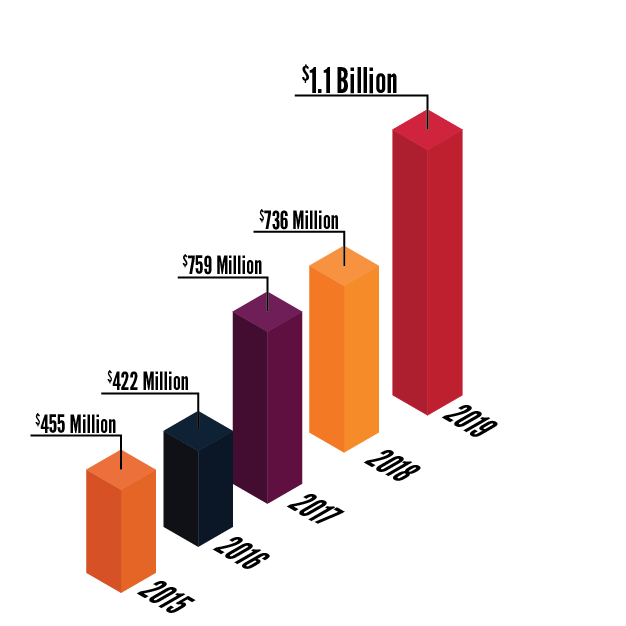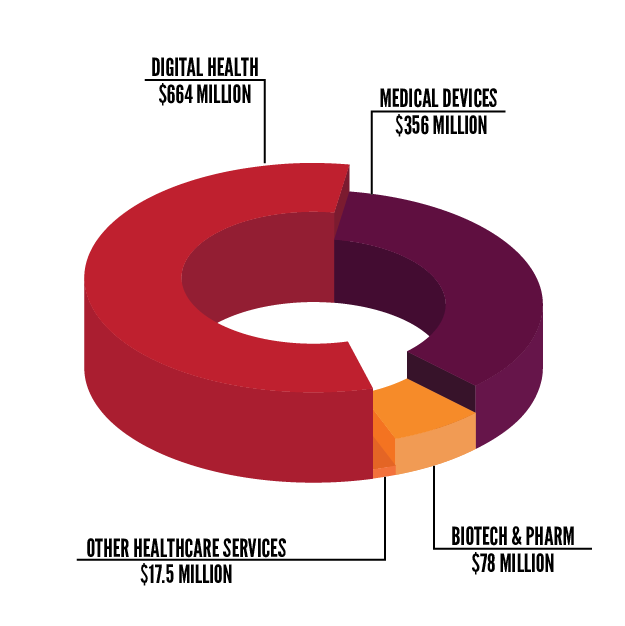
Even with just a month of perspective, it’s abundantly clear that 2019 was a huge year for the Medical Alley startup ecosystem. The community as a whole raised more than $1 billion for the first time and Bright Health’s $635 million round at a $2.2 billion valuation broke the state’s record for the largest venture capital round raised and gave Minnesota its first true unicorn. These are accomplishments that will resonate as long as founders look at fundraising climates to determine where to start their company; it would be easier to underestimate the importance of these breakthroughs than it is to overstate them. But 2019 may prove to be an even more important year to Minnesota’s future than it seems today. The reinstatement of the Angel Tax Credit Program (ATCP) showed a level of state support for entrepreneurship that had been missing in previous years, as did the creation of Launch Minnesota. Both programs had strong years despite needing to ramp up quickly following the end of the 2019 legislative session, laying solid foundations for the future of entrepreneurial growth in Minnesota.
More than anything, 2019 illustrated that Medical Alley is an ecosystem that has grown by leaps and bounds over the last few years, drawing a significant increase in national attention, and one that is positioned for strength for years to come. Bright Health drew the headlines, and rightfully so, but a deeper look into the year shows that the region has plenty to be excited about beyond the newly minted unicorn.

The Top Lines
98 companies raised a record $1.1 billion in 2019, with digital health companies raising over $664 million to lead all sectors, its fifth consecutive year of year-over-year growth. This year’s increase sets Medical Alley’s digital health companies in opposition to the national trend that showed investment in digital health companies declining. Medical device companies raised their second highest annual total in the last five years at $356 million led by Nuvaira’s $79 million in February.
In the 2019 First Half Investment Report, we explored the growing synergy between the two sectors, which is rapidly occurring here in Medical Alley. The line between the two will continue to blur as digital health companies utilize devices to take the data they need and device companies optimize their use of the data they receive from connected devices.
There is presently a window of opportunity for companies that help bridge the gap between these two sectors, though as they converge and larger companies bring their data and security work in-house, the market will likely select a small number of de facto winners and leave the rest to fight over a diminished pool of customers. For the time being, however, it is a space with a high upside and strong funding opportunities thanks to a number of VC firms with a background in software looking to move into healthcare.
A Homegrown Crop
As we discussed in our Q3 Investment Report, the creation of Launch Minnesota, the return of the ATCP, and the opening of a number of venture capital funds all indicate favorable conditions for business foundation in Medical Alley. Those impacts will be felt more acutely in the future, of course, which could have made 2019 the last year of a downward trend that started following the lapse of the ATCP. Instead, 19% more companies raised rounds under $4 million in 2019 than they did in 2018, not just halting the trend but reversing it completely. Final ATCP numbers are forthcoming, but the early returns show a program that was utilized to the fullest extent of its funding.
Between this burgeoning crop of early stage companies and the massive later series raises lay a set of companies that are often unduly overlooked. Med Device in particular saw this middle group perform well this year as a record number of companies took rounds between $1-4 million and between $4-20 million. The continued success of this set of companies will be critical to the ecosystem as a whole continuing to grow while rounds like Bright’s are not commonplace.
Strategic Integration at Scale
Consolidation is a major trend across healthcare and Medical Alley was no exception in 2019 as major M&A activity was present in every sector. 3M’s $6.7 billion purchase of Acelity, the largest in company history, was also the largest deal of 2019. Boston Scientific $4 billion buy of BTG was the largest in device, while UnitedHealth Group finally completed its delayed $4.3 takeover of DaVita Medical Group in the type of payer-and-provider deal we expect to see more of in the near future.
Similar deals occurred later in the year as Blue Cross and Blue Shield purchased a 49% stake in North Memorial Health and a partnership between Optum and Allina Health for the operation of several ambulatory surgical centers was announced. Action at the federal level to improve price transparency for patients and potential changes to the Stark Law and Anti-Kickback Statute, make these partnerships even more appealing for both payers and providers as they look to drive extraneous costs out of healthcare and give patients the best possible experience while simultaneously driving out costs. We expect deals of this nature to speed up as the barriers to collaboration come down; they will likely take a variety of different forms as they have already rather than always appearing as an acquisition.
In all, we tracked 16 deals that closed in 2019 with a total disclosed value of $16.9 billion, which does not include the nearly $5 billion acquisition of Wright Medical by Stryker that was announced in November 2019. That deal is expected to close in the second half of 2020 and will be included when it is complete.
The presence of large acquirers – the Medical Alley company was the acquirer in virtually all of the disclosed deals – makes the region an even more appealing place to grow a company. These companies represent powerful allies and the potential for a life-changing exit, particularly for more mature companies or if the public markets are hit with exogenous shocks in 2020.
Looking to The Future of Medical Alley
For years, these reports have served as evidence of the fact that Medical Alley’s startup scene was heating up, had incredible growth potential, and was being undervalued by outside analysts. The amount of activity going on here is now undeniable and it’s happening at all stages of the business lifecycle. Sustaining this excellence will take more hard work from entrepreneurs, continued support from the state, and the backing of the entire Medical Alley community. It’s a tall order, but 2019 proved that it is possible. All that’s left is for this powerhouse community to prove it can make it happen again.
